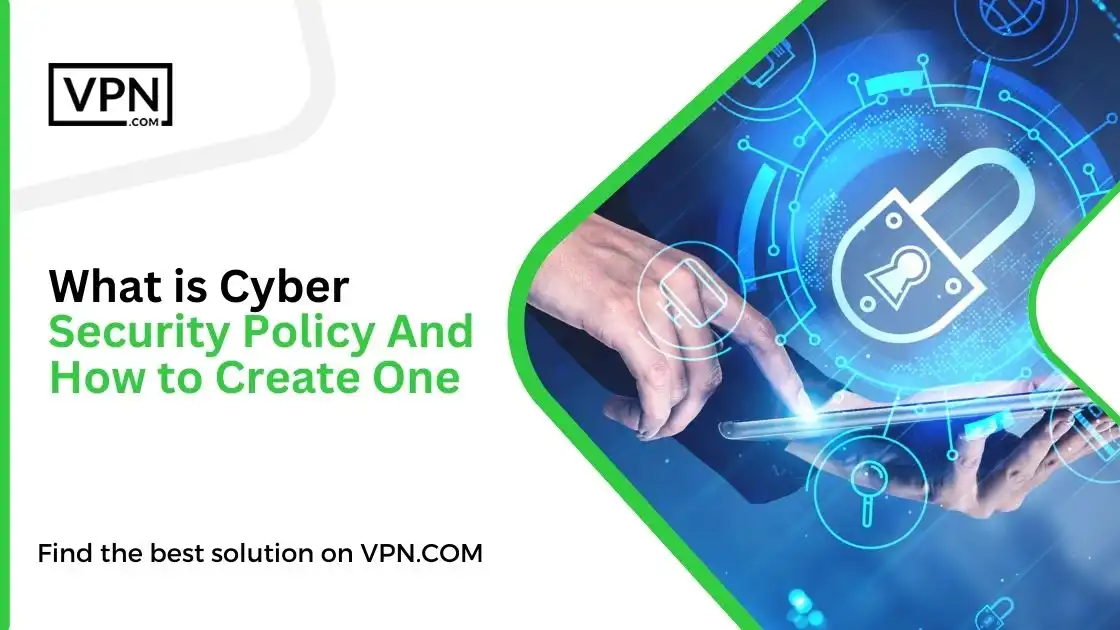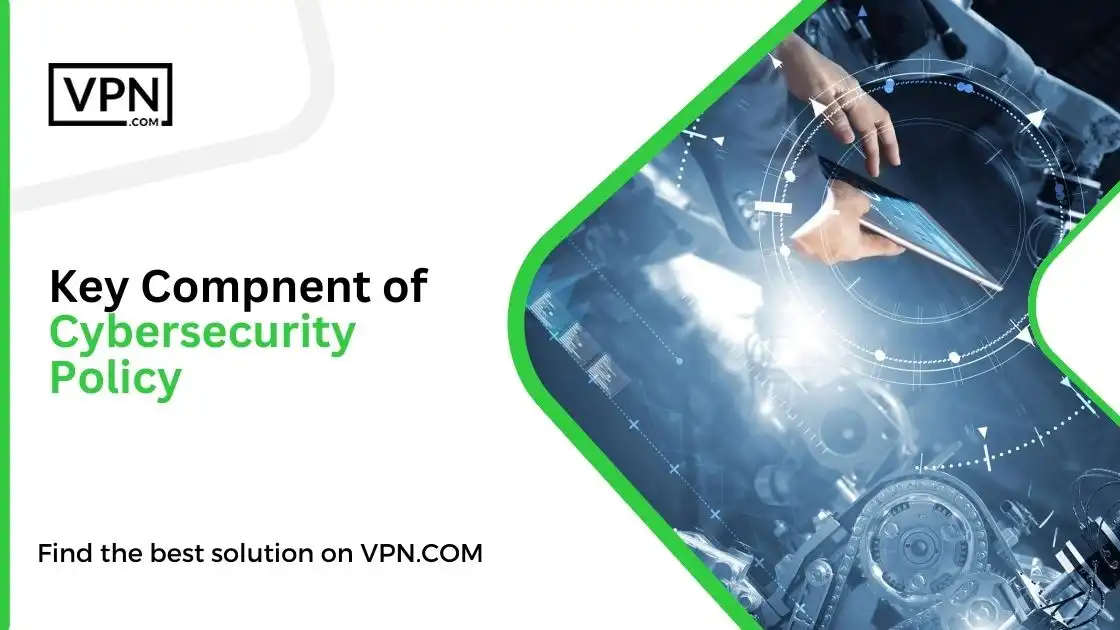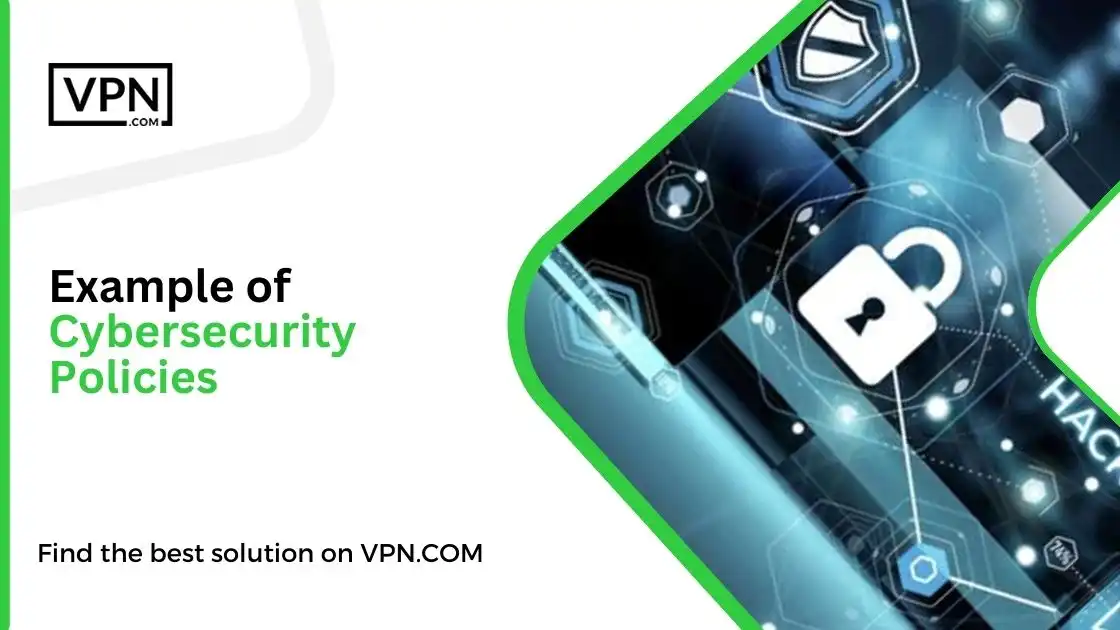What Is Cyber Security Policy And How To Create One

- 1. What is Cyber security Policy?
- 2. Key Compnent of Cybersecurity Policy
- 3. Common Types of Cybersecurity Policies
- 4. Example of Cybersecurity Policies
- 5. Steps To Create a Cybersecurity Policy
- 6. Challenges In Creating A Cybersecurity Policy
- 7. Best Practices For Effective Cyber security Policy
- 8. Conclusion
Are you concerned about keeping your data safe from harmful actions? Do you want to learn about the cybersecurity policies and how to create one? If so you are in the right place. In this article, we will guide you through some steps and provide guidelines to help you understand and create a cybersecurity policy.
People are the most open part of creating a strong defense against cyber dangers. The most recent report says that 82% of data breaches happen because of people. Having a strong cybersecurity policy can help you keep your private information and technology safe from online dangers.
What is Cyber security Policy?
Cybersecurity policies play an important role in today’s world. Cybersecurity is the activity of detecting, preventing, and responding to attacks on networks, programs, and data involving technology.
The cyber security policy provides the framework necessary to protect an organization’s information technology assets from malicious attack through procedures and guidelines while allowing the organization to also make informed decisions by explaining the risk associated with any security-related activity.
The goal of making cyber security policies is to help people choose trusted tools and methods for doing careful risk analysis. If you want people who have to follow your cybersecurity rules to take them seriously, you need to know about threats, weaknesses and risks before you write them. Cyber security policies are fundamental part of businesses operation and corporate governance structure as they help efficient critical system protection strategies are in place.

Get Started w/ NordVPN Today
- Top-rated VPN for OS unknown
- Ultra-fast speed in US in 2024
- Save 69% off with VPN.com Discount
- Plans starting at $2.99/month
GUARANTEE
Key Compnent of Cybersecurity Policy

Modern businesses need to make sure their protection is strong which includes a few key components that are:
- Governance and Leadership
- Risk Management and Assessment
- Security Framework and Control
- Incident Response and Reporting
- Access Control and Authentication
- Security Awareness and training
- Compliance and Regulatory Requirements
- Monitoring, Testing and Evaluation
Governance and Leadership
Cybersecurity is a dynamic field that requires the historical approach. To establish or create a safe and dependable system, stakeholders must agree on roles, responsibilities and cybersecurity governance policies.
Every organization should have highly skilled empirical leadership constantly pushing cybersecurity. It will establish accountability and create the ideal atmosphere for designing effective security measures to safeguard a company from cyber threats.
Risk Management and Assesment
To succeed, cyber security policy demands a complete approach. To create a safe and dependable system, stakeholders must agree on roles and responsibilities and cybersecurity governance policies. Every organization should have highly skilled empirical leadership aggressively pushing cybersecurity.
It will establish accountability and create the ideal atmosphere for designing effective security measures to safeguard a company from hostile cyber threats.
Security Framework And Controls
In today’s digital world, it is very important to have a strong security system because there are many advanced cyber threats. This framework should clearly state security goals, objectives, and standards that businesses can use to keep their digital assets safe and secure.
One important thing to remember is that using both technology and non-technology security measures together is necessary to fully protect against cyber attacks. They also should understand and manage the risks that come with working with other companies or individuals such as suppliers or colleagues.
Incident Response And Reporting
In today’s digital world where cyber threats are more common than ever, organizations need to have a clear plan for responding to incidents. This plan helps to find and deal with cyber problems quickly. It stops damage and makes the organization stronger against future threats.
To make this plan successful, it is important to have good ways of reporting things both inside and outside the organization. This will help us to communicate well with the people who are involved and quickly deal with any security problems.
Access Control And Authentication
In today’s world of computers and the internet, it is very important to make sure that sensitive information is kept safe and not changed. Creating clear rules and steps for giving and taking away access to these resources is an important part of this process.
Using strong authentication and authorization methods not only helps confirm who users and devices are but also protects important information from unauthorized access. This is done by creating and managing a security system that can tell the difference between real requests and possible dangers.
Furthermore, creating rules for managing particular access is very important for controlling what special users can do and reducing the chance of insider risks.
Compliance And Regulatory Requirements
Understanding the cyber security policy involves knowing the laws, rules, and standards that protect data and keep digital systems safe. It can be complicated but it’s important to learn about these things.
Organizations need to be careful in creating rules and steps that not only follow these requirements but also change as cyber threats keep changing. Businesses can make sure that they are always following the rules, fixing any problems, and keeping to their best practices by doing regular inspections and reviews.
Monitoring, Testing And Evaluation
In today’s world , where everything is connected, the threats to cybersecurity are constantly changing. This means that organizations need to regularly check and test their security measures. Businesses can stay ahead of possible competitors by regularly assessing how effective their cyber security policy is.
A crucial aspect of this method is performing regular security checks and tests to identify any flaws and weaknesses in a system. This helps the organization tp be better prepared in case there is a real cyberattack. These tests help us learn how to improve our defenses and protect important things by imitating real-life attacks.
Besides all of this, it is crucial for organizations to develop measurements that can accurately determine the success of their cybersecurity strategies.
Common Types of Cybersecurity Policies

An organization can have different cyber security policies. Here are some of the most common ones.
IT Security Policy
An IT security policy is a set of rules and procedures that an organization follows to protect itself from cyber threats. An IT security policy includes the rules for using company assets plans for responding to the incidents strategies for keeping the business running during problems, and a plan for following regulations.
Email Security Policy
An email security policy that explains how to use company email properly to keep the organization safe from spam, phishing, and harmful software like ransomware. It also helps to prevent any misuse of company email. This policy tells people how to use corporate email and what to do with suspicious links and email attachments.
BYOD Policy
A BYOD policy sets rules for using personal devices for work. These rules usually explain what security things are needed for these devices. For example, they may say that you need to use a special security program, have a strong password, and use a VPN when connecting to the company’s networks and things from a network that might not be safe.
Example of Cybersecurity Policies

Online businesses need cybersecurity policies. Cyber threat policies protect data and systems. Your policy should be adapted to your firm because cyber dangers vary. Each industry has a unique cyber security policy examples:
Financial Institutions
Financial Institution’s cyber security policies should encompass consumer data, cyberattacks, and disaster recovery.
Healthcare
Cybercriminals target healthcare because they can obtain patient data. Hence, healthcare cyber security policies should secure patient data and comply with HIPAA.
Retail Industry
Cybercriminals target retailers because they store plenty of user data. Hence, retail cyber security policies should secure customer data and prevent cyber assaults.
Government Organizations
Due to their sensitive data, government agencies are routinely cyberattacked. Hence, government cyber security policies should secure classified information and comply with laws and regulations.
These are the most common industries that need cybersecurity policies. Cybersecurity policies are essential for all industries. Create one now if you don’t. That could make the difference between survival and crippling a cyber attack.
Steps To Create a Cybersecurity Policy

The following steps will help you develop a cyber security policy quickly:
Set Requirements for Passwords
It’s a good idea to have a strong password policy. Research has found that about 30% of data breaches happen because of weak passwords. It would be helpful for your company’s cyber security policy to have rules about making strong passwords, and keeping passwords safe, and using the different passwords for each account. It would also be helpful to tell employees not to share their login information through messaging apps.
Communicate Email Security Protocol
Email phishing is one of the main reasons why ransomware attacks happen. Make sure that your security policy includes instructions on how to handle email attachments, find our suspicious emails, and delete phishing emails.
Train on How to Handle Sensitive Data
Your security policy clearly explains how to deal with sensitive information, such as:
- How can you recognize sensitive information?
- How can you keep your data safe and share it with your team?
- How can you get rid of data when you no longer need it?
Moreover, your policy should prevent various employees from maintaining sensitive information on their personal devices.
Set Guidelines for Using Technology Infrastructure
You need to create clear rules for using the technology system in your company such as:
- Before connecting to the company’s systems, employees need to scan all removable media
- Employees should not use their personal devices to access the company’s server.
- Employees should always make sure to lock their computers or devices when they are not nearby.
- Employees need to put the most recent security updates on their computers and mobile devices.
- To prevent malware infection, limit the use of removable media.
Make Guidelines for Social Media and Internet Access

Your policy must clarify which business information employees should not post on social media. Create rules for deciding which social media apps are acceptable or unacceptable to use while working.
Your security policy should say that employees must always use a VPN to access the Internet for extra security.
Every computer in the company must have a strong firewall and antivirus software before it can connect to the Internet.
Make an Incident Response Plan
An incident response plan outlines procedures to follow during a security breach. Steps to create an effective plan include:
- Identification and Reporting: Use intrusion detection, ask employees for feedback, and check system logs. Create a straightforward way for people to report information.
- Assess and Prioritize: Classify events by how serious they are and what kind they are, like when data is taken or when harmful software is used.
- Containment: Take immediate actions such as separating systems and then put in place long-term plans to control the situation.
- Eradication and Recovery: Find the main reason for the problem and then fix it by using updates or saved copies of the systems.
- Notification: Make sure to keep your internal teams updated and if needed, notify customers or regulators.
- Review and Lessons: Examine the response after the incident and find areas that can be improved.
- Continuous Improvement: Teach employees about the plan and keep them informed about changing cyber threats.
Update Your Cybersecurity Policy Regularly
Cyber security policy can change over time. The world of cyber threats is always evolving and the newest cybersecurity data shows that.
You should regularly review your cyber security policy to make sure it has the right security measures for current security risks and rules.
Challenges In Creating A Cybersecurity Policy

To Design or make a cyber and/or information security policy is achievable, but at times challenges arise when it comes to employees complying with the policy. Employees are major threats to the organization’s security.
Usually non-compliance is brought about by effects on productivity levels, lack of consideration, anything goes, uncontrolled behavior, and forgetfulness. The right actions should be exercised to stop the bad behavior and have everyone in the workforce follow the policy in practice,
When employees are not involved in the process of decision-making, they tend to distrust the policies. When policies are too strong or too rigid, a sense of employee distrust will prevail.
The best practice is to spend some time assessing and analyzing the challenges before designing the cyber security method or strategy and the relevant policy. When enforcing the policy, spend special attention to respecting the privacy of those involved – even during monitoring.
Best Practices For Effective Cyber security Policy

Every organization needs to have simple and straightforward rules in order to be successful. To achieve this goal, it is important to include everyone involved and all the different parts of the organization when creating the policy. This helps everyone to feel like they have a part in it and makes it easier to put into action.
Making sure that everyone in the organization follows the rules and guidelines helps create a better and more productive work environment. Effective communication of these policies is also essential so that employees are well-informed and guided in their day-to-day activities.
Training and making people aware of the policies helps employees understand what they need to do and encourages them to follow the policies. Reviewing and updating these policies regularly helps companies to adjust to the always-changing business environment and stay ahead of possible problems.
By continually reviewing and managing risks related to these policies, the organization can find and fix weaknesses which help to ensure a long-term success and progress in a world that is becoming more complicated and competitive.

Get Started w/ NordVPN Today
- Top-rated VPN for OS unknown
- Ultra-fast speed in US in 2024
- Save 69% off with VPN.com Discount
- Plans starting at $2.99/month
GUARANTEE
Conclusion
It is very important to have a strong and detailed cyber security policy in today’s growing digital world. Effective cyber security policy management ensures that organizations keep sensitive information and critical systems safe. This is because organizations, governments, and people depend on technology for many things in their daily lives.
All organizations, regardless of their size or industry, need to be aware of the possible dangers of cyber threats. They should take steps to create and implement useful policies that reduce these risks. Proper cyber security policy management not only outlines these policies but also ensures their regular updating and effectiveness.
We need to work together to keep our digital things safe and make our defenses stronger against the bad guys who are attacking us online. They are getting better at what they do, so we have to be ready.
Get your company ready by creating a detailed cyber security policy and taking immediate action instead of waiting for a cyber disaster to happen.
Customer Reviews for NordVPN: In-Depth Review, Tests, and Stats

Connection issues with MLB.TV
May, 2 2023

Prompt customer service
May, 6 2023

I would highly recommend
December, 15 2023



